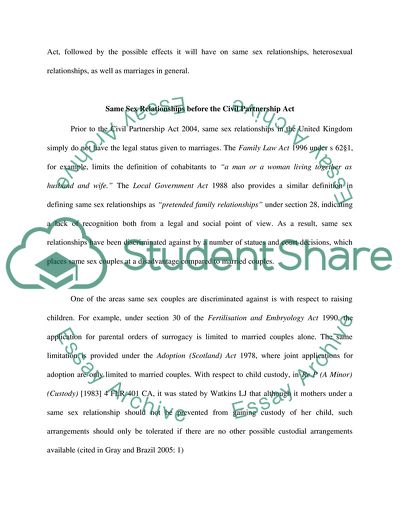Cite this document
(“The Civil Partnership Act Essay Example | Topics and Well Written Essays - 2750 words”, n.d.)
Retrieved from https://studentshare.org/law/1515177-the-civil-partnership-act
Retrieved from https://studentshare.org/law/1515177-the-civil-partnership-act
(The Civil Partnership Act Essay Example | Topics and Well Written Essays - 2750 Words)
https://studentshare.org/law/1515177-the-civil-partnership-act.
https://studentshare.org/law/1515177-the-civil-partnership-act.
“The Civil Partnership Act Essay Example | Topics and Well Written Essays - 2750 Words”, n.d. https://studentshare.org/law/1515177-the-civil-partnership-act.


